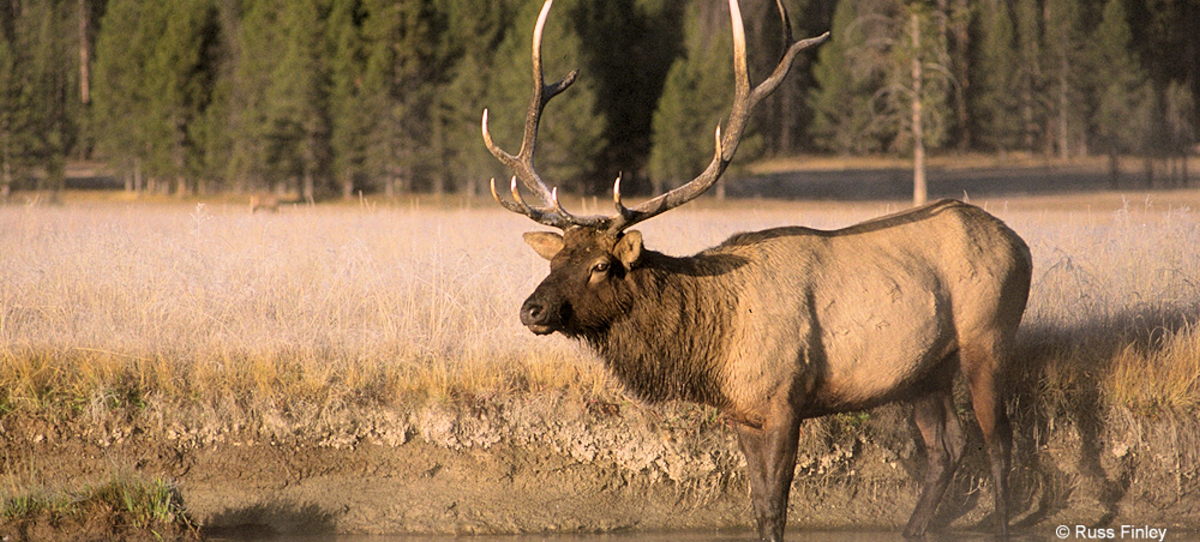Yellowstone’s abundant and diverse wildlife are as famous as its geysers. Habitat preferences and seasonal cycles of movement determine, in a general sense, where a particular animal may be at a particular time. Early morning and evening hours are when animals tend to be feeding and thus are more easily seen. But remember that the numbers and variety of animals you see are largely a matter of luck and coincidence. Check at visitor centers for detailed information.
Wild animals, especially females with young, are unpredictable. Keep a safe distance from all wildlife. Each year a number of park visitors are injured by wildlife when approaching too closely. Approaching on foot within 100 yards (91 m) of bears or within 25 yards (23 m) of other wildlife is prohibited. Please use roadside pullouts when viewing wildlife. Use binoculars or telephoto lenses for safe viewing and to avoid disturbing them. By being sensitive to its needs, you will see more of an animal’s natural behavior and activity. If you cause an animal to move, you are too close!
BISON may appear tame and slow but they are unpredictable and dangerous. They weigh up to 2,000 pounds (900 kg) and sprint at 30 miles per hour (48 kph), three time faster than you can run! Every year visitors are gored and some have been killed.
COYOTES quickly learn bad habits like roadside begging. This may lead to aggressive behavior toward humans. Never approach or feed a begging coyote.
BEARS – Be alert for tracks and sign. The best way to avoid a bear is to take all necessary precautions to avoid surprise encounters.
Yellowstone also has a wide variety of plant life. In the spring and early summer, wild flowers appear in abundance. They are well worth viewing, and it is usually safer to approach them.
